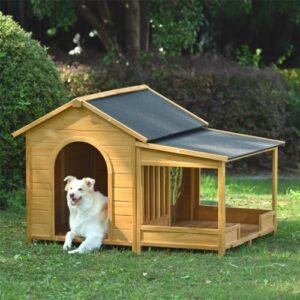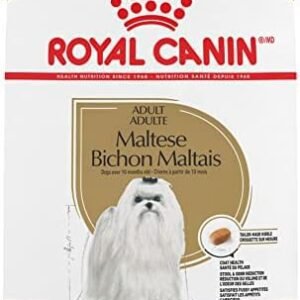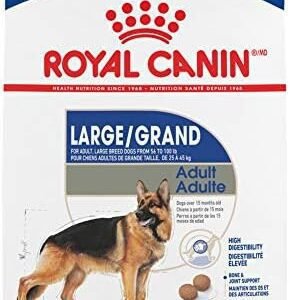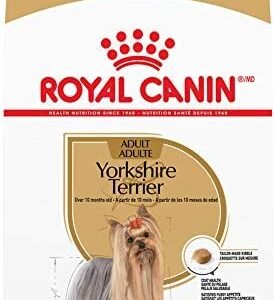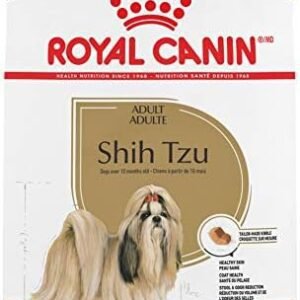Have you ever wondered about the foods we savor and whether they could be shared with our four-legged companions? Picture this: a sunny day, a crunchy snack, and the delightful sweetness of sugar snap peas. These vibrant green pods are not only a favorite among humans but also a wholesome treat for dogs. But is it safe to share this crunchy delight with your furry friend?
In a world where our dogs are not just pets but cherished members of our families, understanding what’s safe for them to consume is of paramount importance. Just as we carefully consider what we put on our plates, we must extend the same diligence to our canine companions’ meals. In this article, we will delve into the intriguing question: can dogs eat sugar snap peas? Along the way, we will explore the pros and cons of offering these verdant veggies to your dog, determine the appropriate quantity, and learn what to do if your dog decides to nibble on a part of the sugar snap pea plant that might not be suitable for their palate or health. Let’s embark on this culinary journey that not only nourishes our curiosity but also serves as a guide to responsible and caring pet ownership.
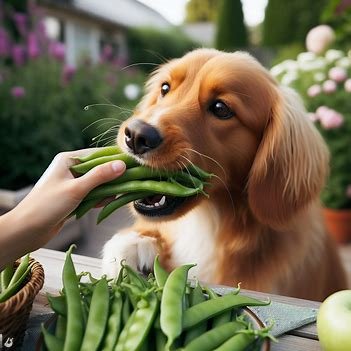
Table of Contents
Can Dogs Eat Sugar Snap Peas?
Is Sugar Snap Peas Safe for Dogs?
As a responsible pet owner, you may find yourself questioning whether it’s safe to share sugar snap peas with your canine companion. The good news is that sugar snap peas are generally safe for dogs when served in moderation. These delightful pods are not toxic or dangerous to dogs, and many pups find their unique taste and satisfying crunch quite enjoyable. However, as with any new addition to your dog’s diet, there are essential factors to consider.
Nutritional Profile of Sugar Snap Peas
Before we delve into the potential benefits and drawbacks of sugar snap peas, let’s take a moment to explore the nutritional facts of these verdant veggies. Here’s a breakdown of the key nutrients found in sugar snap peas:
| Nutrient | Quantity per 100g |
|---|---|
| Calories | 42 |
| Carbohydrates | 9.57g |
| Fiber | 2.6g |
| Protein | 2.8g |
| Fat | 0.4g |
| Vitamin A | 859 IU |
| Vitamin C | 59mg |
| Vitamin K | 24.8mcg |
| Folate | 65mcg |
| Iron | 1.17mg |
| Potassium | 194mg |
| Magnesium | 24mg |
| Phosphorus | 59mg |
Sugar snap peas offer a rich array of vitamins and minerals, including Vitamin A for eye health, Vitamin C for immune support, and Vitamin K for blood clotting. They are also a source of folate, iron, potassium, and magnesium. However, while these nutrients can be beneficial for dogs in moderation, it’s essential to understand the potential drawbacks of feeding sugar snap peas to your furry friend.
Pros and Cons of Feeding Sugar Snap Peas to Dogs
The Benefits of Sugar Snap Peas
Nutrient-Rich Treat: Sugar snap peas are a nutrient-dense treat for dogs. They offer essential vitamins and minerals that can contribute to your pet’s overall health.
Low in Calories: With only 42 calories per 100g, sugar snap peas are a low-calorie snack, making them an excellent choice for dogs watching their weight.
Fiber Content: The fiber in sugar snap peas can aid in digestion and promote a feeling of fullness, which can be beneficial for dogs with weight management concerns.
- Crunchy Texture: The satisfying crunch of sugar snap peas can help maintain your dog’s dental health by reducing plaque and tartar buildup.
Potential Drawbacks
Digestive Upset: Some dogs may be sensitive to dietary changes, and introducing sugar snap peas abruptly could lead to digestive upset, including gas or diarrhea. It’s best to introduce them gradually.
Portion Control: While sugar snap peas are generally safe, they should be fed in moderation. Too many sugar snap peas can lead to an upset stomach or potentially interfere with your dog’s primary diet.
Sugars: Sugar snap peas contain natural sugars, which can be a concern for dogs with diabetes or those on a low-sugar diet. Always consider your dog’s specific dietary requirements.
- The Pea Pod: While the peas inside the sugar snap pea pod are typically safe for dogs, the pod itself may be tough and challenging to digest. It’s advisable to remove the peas from the pod before offering them to your pet.
Complement, Don’t Replace
In summary, sugar snap peas can be a wholesome and nutritious addition to your dog’s diet when given in moderation. They offer vitamins, minerals, and fiber that can support your dog’s well-being. However, it’s essential to remember that sugar snap peas should complement, not replace, your dog’s primary diet. Their main meals should consist of balanced, commercial dog food or a homemade diet designed with your veterinarian’s guidance.
In the next section, we will explore the ideal serving sizes of sugar snap peas for dogs, taking into account factors like your dog’s size and dietary needs. This knowledge will help you provide the perfect portion to ensure your furry friend enjoys the benefits without any negative effects.
How Much Sugar Snap Peas Can a Dog Eat?
Moderation is Key
When it comes to incorporating sugar snap peas into your dog’s diet, moderation is the golden rule. While these vibrant veggies offer numerous benefits, overindulgence can lead to potential issues. Treats, including sugar snap peas, should not constitute more than 10% of your dog’s daily calorie intake. The remainder of their diet should be balanced and nutritionally complete to meet their specific needs.
Start Small and Observe
Before offering a significant portion of sugar snap peas to your dog, it’s a wise idea to start small and observe their response. Not all dogs react the same way to dietary changes, and some may be more sensitive to new foods. Begin with a single sugar snap pea or a small piece, and monitor how your dog reacts. Watch for any signs of digestive upset, such as diarrhea, gas, or discomfort.
Proper Preparation Matters
The way you prepare sugar snap peas for your dog is crucial. While the peas inside the pod are generally safe, the pod itself can be tough and challenging to digest. To ensure your dog can enjoy sugar snap peas without any issues, it’s best to remove the peas from the pod. This not only makes them easier to eat but also reduces the risk of any digestive discomfort.
Consider Your Dog’s Size and Breed
The serving size of sugar snap peas can vary based on your dog’s size and breed. Larger dogs may be able to tolerate a slightly larger portion than smaller dogs. As a general guideline, a small dog may be given one or two sugar snap peas as a treat, while a larger dog could have up to four or five. Always tailor the serving size to your dog’s specific needs and take their individual preferences into account.
Appropriate Serving Sizes by Weight
Here’s a rough breakdown of appropriate serving sizes of sugar snap peas based on your dog’s weight:
- Small Dogs (under 20 pounds): 1-2 sugar snap peas
- Medium Dogs (20-50 pounds): 2-3 sugar snap peas
- Large Dogs (50-100 pounds): 3-4 sugar snap peas
- Extra-Large Dogs (over 100 pounds): 4-5 sugar snap peas
Remember, these are general guidelines, and it’s essential to assess your dog’s response and adjust the serving size accordingly. Some dogs may have a higher tolerance for sugar snap peas, while others may be more sensitive.
In the next section, we will explore the potential risks and benefits of feeding sugar snap peas to dogs with dietary restrictions or specific health conditions. It’s crucial to consider these factors to ensure your dog’s well-being when introducing new foods into their diet.
What Are the Risks of Feeding Sugar Snap Peas to Dogs?
While sugar snap peas can be a delightful and nutritious treat for most dogs, it’s important to be aware of potential risks and considerations when introducing them into your pet’s diet.
Food Allergies and Sensitivities
Just like humans, dogs can have food allergies or sensitivities. Although sugar snap peas are not common allergens, it’s possible for some dogs to be sensitive to certain components within them. Keep an eye on your dog when you introduce sugar snap peas to their diet. Signs of food allergies may include:
- Itching and Scratching: Dogs with food allergies may exhibit excessive itching, especially around the ears, paws, or face.
- Digestive Distress: Gastrointestinal issues like diarrhea, vomiting, or gas can be signs of food sensitivities.
- Skin Irritations: Allergic reactions may manifest as skin irritations, such as hivesor rashes.
Potential Hazards in Sugar Snap Peas
While sugar snap peas are generally safe for dogs, they contain certain components that can be potential hazards:
Sugars: Sugar snap peas contain natural sugars, which may not be suitable for dogs with diabetes or those on a low-sugar diet. Monitor your dog’s sugar intake, especially if they have specific dietary restrictions.
Choking Hazard: The pod of the sugar snap pea can pose a choking hazard if not properly prepared. To reduce this risk, make sure to remove the peas from the pod before serving them to your dog.
Signs of Allergic Reactions
If your dog exhibits signs of an allergic reaction after consuming sugar snap peas, it’s essential to take action promptly. Common signs of allergic reactions include:
- Itching: Persistent scratching or licking, particularly around the face, ears, or paws.
- Digestive Upset: Vomiting, diarrhea, gas, or signs of discomfort.
- Swelling: Swelling of the face, lips, or eyes.
- Hives: Raised, red bumps on the skin.
Should you notice any of these signs, consult your veterinarian immediately. They can diagnosethe issue and provide the necessary treatment to alleviate your dog’s discomfort.
Specific Issues with Sugar Snap Peas
While sugar snap peas are generally safe, it’s crucial to consider a few specific issues that can arise:
Pod Digestibility: As mentioned earlier, the pod of the sugar snap pea may be tough and challenging for dogs to digest. It’s best to remove the peas from the pod before offering them as a treat.
Kidney Stones: In some rare cases, high oxalate levels in certain vegetables, including sugar snap peas, can contribute to the formation of kidney stones in dogs prone to this condition. If your dog has a history of kidney stones, it’s advisable to consult your veterinarian before incorporating sugar snap peas into their diet.
Signs and Symptoms of Adverse Reactions
Adverse reactions in dogs from consuming sugar snap peas may manifest through various signs and symptoms. If your dog exhibits any of the following, consult with your veterinarian:
- Gastrointestinal Distress: This may include diarrhea, vomiting, or gas.
- Itching and Scratching: Signs of skin irritation or allergies.
- Discomfort: Restlessness or signs of physical discomfort.
- Swelling: Especially in the face or around the eyes.
In the next section, we’ll provide insights into creative ways to incorporate sugar snap peas into your dog’s diet, offering variety and nutrition in a manner that’s both enjoyable and safe for your pet.
How to Feed Sugar Snap Peas to Your Dog and Make It Enjoyable
Feeding sugar snap peas to your dog can be a delightful experience for both you and your furry friend. These vibrant green treats offer a variety of creative possibilities to enhance your dog’s meals and snacks while providing valuable nutrients. Let’s explore different ways to feed sugar snap peas to your dog and make it an enjoyable part of their diet.
1. Fresh and Crisp
The simplest way to introduce sugar snap peas to your dog is by offering them fresh and crisp. Wash and clean the peas thoroughly, remove them from the pods, and serve them as a crunchy treat. Many dogs enjoy the satisfying texture and sweet taste of these green gems. Remember to offer them in moderation, adhering to the serving size guidelines based on your dog’s weight.
2. Mashed or Blended
For dogs who may have difficulty chewing or digesting whole sugar snap peas, consider mashing or blending the peas. This can create a smoother texture that’s easier for your dog to eat and digest. You can mix the mashed peas with your dog’s regular food or serve them as a side dish.
3. Homemade Treats
Get creative in the kitchen and experiment with homemade dog treats that incorporate sugar snap peas. Here’s a simple recipe for sugar snap pea dog treats:
Ingredients:
- 1 cup sugar snap peas (cooked and mashed)
- 1/2 cup oat flour
- 1/2 cup unsweetened applesauce
- 1 egg
Instructions:
Preheat your oven to 350°F (175°C) and line a baking sheet with parchment paper.
In a mixing bowl, combine the mashed sugar snap peas, oat flour, applesauce, and egg. Mix until you have a dough-like consistency.
Roll out the dough on a floured surface and use cookie cutters to create shapes or simply drop spoonfuls onto the baking sheet.
Bake for about 15-20 minutes or until the treats are firm and golden brown.
Let the treats cool before offering them to your dog.
These homemade treats are a tasty way to incorporate sugar snap peas into your dog’s diet and offer variety in their snacking routine.
4. Mix with Regular Meals
You can easily enhance your dog’s regular meals by mixing in some sugar snap peas. Simply cook and mash the peas and mix them with your dog’s kibble or wet food. This adds a flavorful and nutritious element to their meal, making it more exciting for your pet.
5. Frozen Delights
On a hot day, consider creating frozen sugar snap pea popsicles for your dog. Simply blend cooked and mashed sugar snap peas with a bit of water or low-sodium chicken broth and freeze the mixture in ice cube trays. Your dog will relish the cool, refreshing treat.
6. Food Toppers
If your dog is a picky eater, sugar snap peas can be an excellent food topper. They add a burst of flavor and texture to your dog’s regular meals, making them more appealing and appetizing.
Incorporating sugar snap peas into your dog’s diet can not only provide valuable nutrients but also make their meals more enjoyable and diverse. By experimenting with these creative feeding methods, you can enhance your dog’s dining experience and strengthen the bond between you and your four-legged companion.
In the next section, we’ll address common questions and concerns about feeding sugar snap peas to dogs, providing insightful answers to help you make informed decisions about your dog’s diet.
10 FAQs About Dogs Eating Sugar Snap Peas
As responsible pet owners, we want the best for our dogs, including a well-balanced and safe diet. Sugar snap peas are a popular treat for humans, and it’s natural to wonder if they can be part of our canine companions’ meals. To address your common questions and concerns about dogs eating sugar snap peas, here are ten frequently asked questions along with detailed answers.
1. Can dogs eat sugar snap peas?
Yes, dogs can eat sugar snap peas in moderation. These crisp and sweet peas are generally safe for dogs and can be a healthy addition to their diet.
2. Are sugar snap peas toxic to dogs?
Sugar snap peas are not toxic to dogs. However, it’s essential to feed them in moderation and follow the recommended serving sizes.
3. Can sugar snap peas be given as treats?
Yes, sugar snap peas can be given as treats. They offer a satisfying crunch and a touch of sweetness that many dogs enjoy.
4. Are there any benefits to feeding sugar snap peas to dogs?
Certainly! Sugar snap peas are packed with essential nutrients, including vitamins A, C, and K, along with dietary fiber. They can aid in digestion and provide valuable vitamins for your dog’s overall health.
5. Can dogs have sugar snap pea pods?
While the peas inside the pod are generally safe for dogs, the pod itself can be tough and challenging to digest. It’s advisable to remove the peas from the pod before serving them to your dog.
6. How should sugar snap peas be prepared for dogs?
To prepare sugar snap peas for your dog, wash and clean them thoroughly, remove the peas from the pod, and serve them fresh and crisp. Alternatively, you can mash or blend them to create a smoother texture.
7. Can sugar snap peas be used to make homemade dog treats?
Absolutely! Sugar snap peas can be incorporated into homemade dog treats. You can find recipes that combine mashed sugar snap peas with ingredients like oat flour, unsweetened applesauce, and eggs to create nutritious and tasty treats for your dog.
8. What’s the appropriate serving size of sugar snap peas for dogs?
The serving size of sugar snap peas for dogs varies based on your dog’s size. A small dog may be given 1-2 peas, while larger dogs could have 3-4. Always tailor the serving size to your dog’s specific needs and observe their response.
9. Can dogs with food allergies eat sugar snap peas?
While sugar snap peas are not common allergens, some dogs can be sensitive to certain components within them. Monitor your dog for any signs of allergic reactions when introducing sugar snap peas to their diet.
10. Can dogs with specific health conditions eat sugar snap peas?
Dogs with certain health conditions, like diabetes or a history of kidney stones, may need dietary restrictions. If your dog has specific health concerns, it’s advisable to consult with your veterinarian before incorporating sugar snap peas into their diet.
Remember that every dog is unique, and their dietary needs may vary. When introducing new foods to your dog’s diet, it’s crucial to monitor their response and consult with your veterinarian if you have any concerns. Sugar snap peas can be a delightful and nutritious additionto your dog’s meals and snacks when fed in moderation and with care.
Conclusion
In conclusion, sugar snap peas can indeed be a safe and nutritious addition to your dog’s diet when fed in moderation and with care. These crisp and sweet treats provide essential vitamins and dietary fiber, contributing to your dog’s overall health and well-being. However, it’s crucial to be aware of the potential risks associated with feeding sugar snap peas to dogs, including allergies, dietary restrictions, and the importance of proper preparation.
As you can see, dogs can eat sugar snap peas in small amounts as an occasional treat. Nevertheless, you should remain vigilant and limit their intake accordingly. Sugar snap peas are not essential for your dog’s health, and excessive or improper feeding may lead to more harm than good.
If you’re looking for alternative fruits or treats that are safe and healthy for dogs, consider options like blueberries, apples (without seeds), or carrots. These foods are lower in sugar and acidity than sugar snap peas and offer similar or even better nutritional benefits. Remember to remove any seeds or cores before feeding them to your dog.
Do you have any questions or comments about feeding sugar snap peas to your dog? Feel free to share your thoughts and experiences in the comment section below. Your insights and feedback can help other pet owners make informed decisions about their dogs’ diets.




















